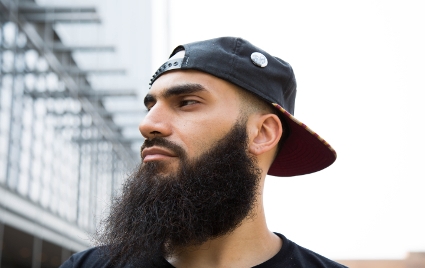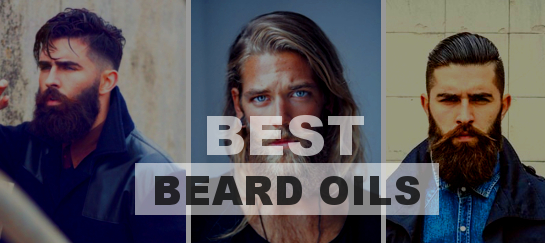Beard
A beard—by definition, is the collection of hair that grows on the cheeks, upper lip and chin of animals, plants and humans. For the human—only the adult males are able to grow a beard, with the exception of women with hirsutism. The beard—which from an evolutionary standpoint is a part of the broader category of androgenic hair. Beards are sort of an ancient vestige trait that reminds the time at which humans had hair all over their face and body—much like gorillas. More pronounced in some populations like the Asians, Americans, and Indigenous, the evolutionary loss of hair is more pronounced—while Caucasians and Ainu often have more facial hair. It is also important to note that—women may also develop beard, from a hormonal condition named hirsutism.
Social attitudes regarding male beards have varied widely throughout history—depending on factors such as current era's fashion and trends or prevailing cultural and religious traditions. Religions such as the Sikhism—consider a full beard to be absolutely essential for every male that is able to grow one—they even mandate it as a part of their official dogma. In other cultures, beards are seen as central to one man's virility—exemplifying virtues such as strength, wisdom, social status or sexual prowess. But, from another viewpoint—in cultures where hair is more uncommon or currently out of fashion—beards may be associated with poor hygiene and uncivilized demeanor.
Biology
The beard growth which starts during puberty is linked to stimulation of the hair follicles by dihydrotestosterone—which continues to affect beard growth even after puberty. Various hormones stimulate the hair growth of different areas—dihydrotestosterone may also promote short-term pogonotrophy for example. To demonstrate this, a scientist spent several weeks on a deserted island in complete isolation. The scientist noticed that his beard growth diminished during the isolation period. And then, the day before he was due to leave the island—his beard growth increased dramatically to reach higher rates than during the first days on the mainland. The conclusion of this study, was that the stimulus for increased beard growth was also related to the resumption of sexual activity—but, this study is still dismissed by major pogonologists like R.M. Hardisty.—who say that beard growth rate is purely genetic.
Evolution
Even tho the fact that beard do not play a direct role in reproduction—biologists characterize them as a secondary sexual characteristic unique to one sex. In his work ''The Descent of Man'', Charles Darwin first suggested that the possible evolutionary explanation for beards—was the process of sexual selection. Modern biologist also have reaffirmed the role of sexual selection in the evolution of beard's growth—thus concluding that there is evidence that the vast majority of females human, find human males with beards more attractive than those without.
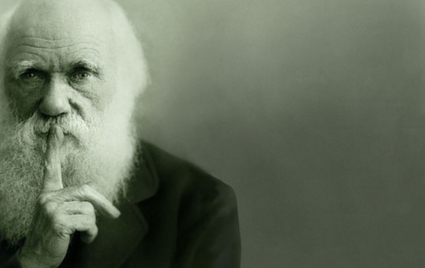
History of Beard
Ancient & Classical world
Lebanon
The coastline of modern Lebanon gave great consideration to hair and beard—The ancient Semitic civilization that was located in the western coastal part of the Fertile Crescent, gave very great attention towards beards. Sculptures from ancestors of the Lebanese have shown an arrangement in beard with three, four, five rows of small curls—extending from ear to ear, around the cheek and chin. But, although we found many sculptures with beards—there are no indications that the Phoenicians were cultivated mustachios (mustache).
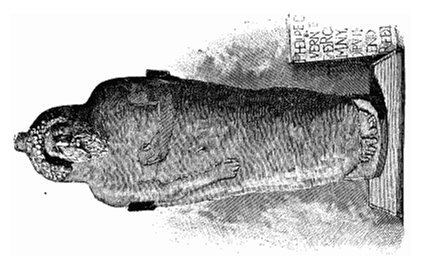
Mesopotamia
Men of Mesopotamian Semitic origin like the Chaldeans, the Assyrians, the Akkadians or the Babylonians—devoted a great amount of time to caring for their beards , oiling them, and dressing them. They used tongs and curling irons to create very elaborate styles in their beards. Thus said, non-Semitic Sumerian men—unlike them tended to shave off their facial hair.
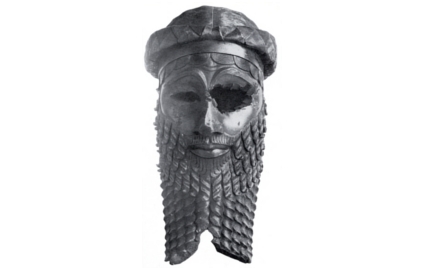
Egypt
Beards were a thing in the highest Ancient Egyptians—they grew hair on their chin, and often dyed them. They also use to braid their beard with interwoven gold thread. Queens and Kings also wore false metal beard or postiche—sign of sovereignty—they were held in place by a ribbon tied over the head and attached to a gold chin strap. This trend existed from about 3000 to 1580 BC
India
The east Indian nations of ancient India grew long beard and treated their beards with great care and veneration—as symbol of dignity and wisdom. Even more, the punishment for licentiousness and adultery was to have the beard publicly cut off. They had such a sacred regard for the preservation of their beards that a man often pledge his beard for the payment of a debt.
China
Confucius who was a Chinese teacher, editor, politician, and philosopher—held that the human body was a gift to which no altérations should be made. He though that one should abstain from body modifications such as tattoos, and should not cut his hair, fingernails or beard. But, people actually comply with this ideal depending on their profession; farmers and soldiers couldn't grow long beards, as it would have interfered with their work. That might be the reason why the clay soldiers in the Terracotta Army all have mustaches and goatees—but shaved cheeks. Most Chinese beards are thin and the mustaches style were kept similar to cat's whiskers.
Iran
Almost every Iranian Kings had a beard—the Iranians were big fond of long beards. In the Achaemenid era, men wore long beards, and warriors even adorned theirs with jewelry—men also commonly wore beards during the Safavid and Qajar eras.

Greece
For the ancient Greeks—beard were regarded as a sign of virility. Furthermore, in the Homeric epics, it had a sanctified signifiance—a common form of entreaty was to touch the beard of the person whom which one was seeking pardon or favor. At this place in time, a clean shaved and smooth face was regarded as a sign of effeminacy. The Spartiates even punished cowards by shaving a part of their beards. A common trend at that time was to curl the beard with tongs.
The Kingdom of Macedonia
It is at this point in time that the custom of smooth shaving was introduced—mainly by Alexander the Great. In fact, Alexander ordered all of his soldiers to be clean-shaven, fearing that their beards could serve as handles for their enemies to grab and hold the soldier as he was killed. This practices spread throughout the whole known world of the Macedonian Empire. It is at this point in time that allusions to beard and philosopher started to change—with proverbs such as: ''The beard does not make the sage.''
Rome
It would seem as the Romans did not know about shaving during their early history. Ticinius was the first to actually bring a barber to Rome in the 454th year from the founding city—around 299 BC. The first Roman to shave his beard was Scipio Africanus. However, after that point, shaving seems to have caught on very quickly—soon almost every Romans men were clean-shaven. With time, being clean-shaven was the distinction sign between a Roman and a Greek—Greek who wore beard at the time. It's only after the time of the Republic that the youth Roman started to shave their beards only partially—trimming it into ornamental form. Interesting fact, it's also at this time that we note the beginning of the use of beard oil—as young prepubescent boys oiled their chins in hopes of forcing premature growth of a beard.

After this short period of time—for a very long time, Romans then view long beard as a mark of slovenliness and squalor and beard remained very rare among the Romans Late Republic and the early Principate—they even had a festival (Toga Virilis) to celebrate the first occasion that men had to shave, regarded as the beginning of manhood—Julius Ceasar celebrated the Toga Virilis in is twentieth. It is only in the second century BC that beard came back in Rome. The emperor Hadrian was then the first of all the Ceasars to grow a beard. It is said that he did that to hide scars on his face. This was a period in Rome of widespread imitation of Greek culture—and many other men grew beards in imitation of Hadrian and the Greek fashion. That was the beginning of another beard era in the Roman Empire. Era, which lasted until the time of Constantine the Great, time before which emperors appear in busts and coins with beards.

Celts and Germanic tribes
The late Hellenistic sculptures represented the Celts were portrayed them with mustache and long hair—but beardless. Ireland, Scotland, and Gaelic Celts men typically let their hair grow into a full beard—it was seen as dishonorable for a Gaelic man to have no facial hair at all. Among Germanic tribes, Tacitus states that a young man was not allowed to shave or cut his hair until he had killed an enemy. Another funny fact is that the name Lombards—is derived from the great length of their beards. Another fact, when Otto the Great said anything serious—he swore by his beard every time—which was long enough to cover is entire chest.
Middle ages
In Europe—in the Middle Ages—beards displayed a knight's honor and virility. In fact, in the ''Lay of the Cid'', Castilian knight El Cid is described as ''the one with the flowery beard''. Another funny thing to notice is that; in the Middle Ages—holding someone else's beard was a very serious offense, which had to be righted in a deadly sword duel. At this time, while most noblemen and knights were bearded—the Catholic clergy was required to be clean-shaven, as being a symbol of their celibacy. Celibacy which is a state of sexual abstinence and voluntarily being unmarried for religious purpose.

In Arabia—pre-Islamic—men were shaving the hair on their chin and cheeks, but would apparently keep mustaches. Later on, prophet Muhammad encouraged his followers to do the exact opposite: shaved mustache and long chin and cheeks beard. This act was meant to break with the old religion. This beard style spread along with Islam during the Muslim expansion of the Middle Ages—and is still practiced today and is called the Sunnah.
From the Renaissance to the Present Day
The Renaissance
In the 13th thru the middle of the 16th century, in the Ming dynasty—most Chinese emperors appear in portraits with long beards and moustaches. After the Ming dynasty, during the Chinese Qing dynasty—middle of the 16th century through the 19th century—men were then clean-shaved and most of them wore mustaches.
In Europe, in the 15th century—men were clean-shaven. That being said, around the 16th century, European men started to grow long beards—just look at the beard length saw in portraits of men like Bishop Gardiner, Thomas Cranmer, John Knox, and Cardinal Pole. The most usual beard's style of this time where the forked beard, the English square cut beard, the Spanish spade beard, and the stiletto beard.
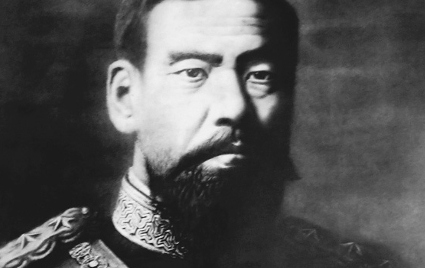
The 17th Century
After, during the 17th century—size of beards dramatically decreased in the Western Europe. Therefore, in the second half of the 17th century, men gradually became clean-shaven and beards less common. In an effort to bring the Russian society in line with contemporary Western Europe, Peter the Great of Russia ordered men to shave off their beards and moreover—in 1706, he levied a special tax on beards.

The 19th century
Amongst the nobility and upper classes of the early 19th century, most men went clean-shaven. During the 1850's there was however, a dramatic shift in the beard's popularity—which became markedly more popular. Beards were then adopted by many leaders, cultural figures, and leading statesmen, such as Frederik III of Germany, Alexander III of Russia, Napoleon III of France, Charles Dickens, Benjamin Disraeli, Karl Marx, Giuseppe Verdi and Giuseppe Garibaldi—we even named two beard's style from the name of Mr. Verdi and Mr. Garibaldi. The shift of this trend can be seen amongst the post-civil war presidents in the United States of America. Before Lincoln, no president ever had a beard—therefore, after Lincoln, until Wilson, every single President except Andrew Jonhson and McKinley had either a mustache or a beard. At this time, beard became linked with notions of male courage and masculinity.

The 20th century
In the Victorian period, in the early 20th century, beards began a slow decline, although retained by some prominent figures like Sigmund Freud. But in the 1920s and the 1930s, most men limited their facial hair to a mustache or a goatee—such as Albert Einstein, Leon Trotsky, Marcel Proust, Vladimir Lenin, Joseph Stalin, and Adolf Hitler.
In the Chinese revolution of 1911 led the Chinese to idealize the West as more modern and progressive than themselves. This included the realm of fashion, and Chinese men began shaving their faces and cutting their hair short.
Meanwhile, in the United States, popular movies portrayed heroes with clean-shaven faces. Concurrently, the psychological mass marketing of Madison Avenue became prevalent and companies such as Gilette Safety Razor were one of these early marketer's clients. For decades to come, these events conspired to popularize clean-shaven face and short hair as being the only acceptable style.
Beard were then reintroduced to mainstream society by the counterculture, firstly with the Beatnik in the 1950s and then with the hippie movement of the mid-1960s. Then, after the Vietnam War, beards exploded in popularity. Then, in the mid-late 1960s, throughout the 1970s—beards were worn by businessmen and hippie. Very popular music artists like The Beatles, The Beach Boys, Barry White, Jim Morrison, among many others wore full beards. Shortly after, in the mid-1980s, the beard trend was seemingly ubiquitous.

The closely trimmed Verdi beard often matched with integrated mustache—became relatively common by the end of the 20th century. In The United States, from the 1990s onward—fashion generally trended toward either a goatee, a closely cropped full beard or a Van Dyke. From then to 2010s, the fashionable length was a two-day stubble beard. Beards saw another rise in popularity in the 2010s decade, as the full beard became fashionable amongst young men—trend which is strongly associated with the ''lumbersexual'' stereotype nowadays.
Facial hair and Political Leaders
In Western societies, facial hair has progressively grown out of fashion—as evidenced by the rare number of leaders who grew their facial hair since the 1930s. As a matter of fact, the last US President to wear either a beard or a mustache was William Howard in 1909—but, leaders in other parts of the world continued to wear facial hair. The most recent head of state or government to have grown facial hair in office include:
-President Muhammadu Buhari, Nigeria, mustache.
-King Salman, Saudi Arabia, beard and mustache.
-Prime Minister Charles Michel, Belgium, beard and mustache.
-President Recep Tayyip Erdoğan, Turkey, mustache.
-President Mahinda Rajapaksa, Sri Lanka, mustache.
-Prime Minister Narendra Modi, India, beard and mustache.
-President Hassan Rouhani, Iran, beard and mustache.
-President Mamnoon Hussain, Pakistan, mustache.
-President Mariano Rajoy, Spain, beard and mustache.
-Prime Minister Najib Razak, Malaysia, mustache.
-President Vicente Fox, Mexico, mustache.
-President Mohamed Morsi, Egypt, mustache.
-President Luiz Inácio Lula da Silva, Brazil, beard and mustache.
-President Kgalema Motlanthe, South Africa, beard.
-Prime Minister Massimo D'Alema, Italy. mustache.
-Prime Minister Radu Vasile, Romania, mustache.
-President Lech Wałęsa, Poland, mustache.
-Prime Minister Yitzhak Shamir, Israel, mustache.
-President Raúl Alfonsín, Argentina, mustache.
-Prime Minister Takeo Miki, Japan, mustache.
-Emperor Hirohito, Japan, mustache.
-Chairman of the (East German) State Council Walter Ulbricht, Germany, beard and mustache.
-Reich Chancellor Adolf Hitler, Germany, mustache.
-Prime Minister, then President Charles de Gaulle, France, mustache.
-Chairman of the Presidium of the Supreme Soviet Anastas Mikoyan, Soviet Union/Russian Federation, mustache.
-Prime Minister Harold Macmillan, United Kingdom, mustache.
-Prime Minister then President Hồ Chí Minh, Vietnam, mustache and beard.
-Prime Minister Willem Drees, Netherlands, mustache.
-President J. K. Paasikivi, Finland, mustache.
-Prime Minister Axel Pehrsson-Bramstorp, Sweden, mustache.
-Prime Minister George Forbes, New Zealand, mustache.
-Prime Minister Billy Hughes, Australia, mustache.
-Prime Minister Robert Borden, Canada, mustache.
-President William Howard Taft, United States, mustache.

Interesting to know, there have been no heads of state in Indonesia, Thailand, Singapore and Republic of Korea who have worn facial hair.
Beards in Religion
In some religions, beards play an important role—like in Greek mythology and art Zeus and Poseidon are always portrayed with beards. Pretty much the only one who's never been portrayed with a beard is Apollo. The bearded representation of Hermes was replaced in the 5th century BG by a beardless Hermes—which is the more familiar representation of him in the modern world. In the Norse mythology, we can also notice that Thor, the god of thunder, is also portrayed wearing a glorious red beard.
Christianity
Representations of Jesus are almost always with him wearing a thick beard, and many other paintings and statues of the Old and New Testament Biblical characters—such as Abraham, Moses, St Peter, and John the Baptist. In the famous painting of The Last Supper by Leonardo daVinci, eight of the figures portrayed are bearded.
In Eastern Christianity, religious authorities recommended or required men believers to wear beards—members of the monastics and priesthood also often wear beards.
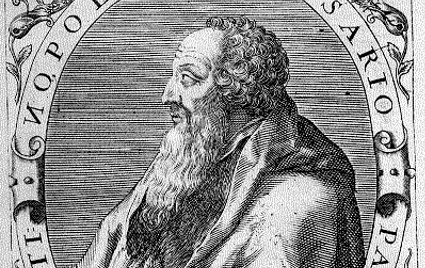
Hutterite and Amish men are told not to shave before they are married—and once married, they shall never shave their beard ever again—but by following a certain beard style.
Depending on various circumstances and at various times in history, in the West Catholic Church prohibited or permitted facial hair for the clergy.
In Carthage and the South of Gaul, at the beginning of the 6th century, clerics have been forbidden from letting their hair and beards grow freely. The first pope to wear a beard in relatively modern times was the pope Julius II—which he did as a symbol of mourning for the loss of the city of Bologna. Pope Clement VI also let his beard grow during the sack of Rome in 1527—that being said, all his successors also grew beards until the death of Pope Innocent XII—who is the last bearded Pope so far. Nowadays, the vast majority of Latin-rite clergy are clean-shaven, but some others like Capuchins still wear beards.
LDS Church
The Church of Jesus Christ of Latter-day Saints has since the mid-twentieth century encouraged men to be clean-shaven—although many early LDS Church leaders wore beards, such as Brigham Young. The reason why the Church encouraged men's shaving was not theological, but rather stems from the general waning of beards in the Western society—because, in the twentieth-century beards were associated with the hippie and drug culture of the 1960s.

Most LDS Church leaders have been clean-shaven since church president David O. McKay in 1951. The church to this day maintains no formal policy on facial hair for the general membership—but, for young men providing two-year missionary service, formal prohibitions against facial hair are currently enforced. Institutions sponsored by the LDS Church, such as Brigham Young University, require staff and students to adhere to the Church Educational System Honor Code—which states: ''Men are expected to be clean-shaven; beards are not acceptable''. However, BYU students are permitted to wear trimmed mustache.
Hinduism
In Hinduism, the regards concerning beards in the ancient text depends on the Deva and teachings—varying according to whom the devotee worships or follows—but, most Yoga practitioners, Yogis, and Sadhus keep beards. As Shaivite ascetics are not permitted to own anything, which would include razor—they generally have beards.
Islam
Beard—Lihyah in Arabic—is ruled as mandatory in Islam according to the Sunnah. By consensus allowing the beard to grow and trimming the mustache is considered part of the fitra. Allah's Apostle said ''Cut the mustaches short and leave the beard as it is''. But, inversely, in Turkish culture—the mustaches are more common. The ''beard'' in Islamic culture is from the cheekbones, level with the channel of the ears, until the bottom of the face—it includes hair that grows on the cheeks—but not the hair on the neck, which can be removed. In Muslim and Bukhari, Muhammad said: ''Five things are part of nature; to get circumcised, to remove the hair below one's navel, to trim moustaches and nails, and to remove hair under the armpit''. With the exception of the Salafi movement—in spite of all this, many religious Muslim men of today shave their cheeks or are even clean-shaven.
Judaism
In Leviticus 19:27, the bible states that ''You shall not round the corners of your heads nor mar the corners of you beard.'' The Talmudic tradition explains this to mean that one shall not shave his beard with a single blade razor—as the cutting action of the blade against the skin mar the beard. As the cutting action comes from the contact between the two blades and not one single blade against the skin—some opinions in Jewish law permit men to trim their beards with scissors. Some Poskim Orthodox Jews may also use electric razors to remain clean-shaven based on the same explanation—while other Poskim maintain that electric shavers constitute a razor-like action, and therefore prohibit their use. In Jewish mysticism, the Zohar attributes holiness to the beard as the hairs of the beard symbolize channels of subconscious holy energy flowing from above to the human soul. Therefore, most Hasidic Jews traditionally don't remove nor trim their beards. In traditional Jews, it is also restricted during a 30-day mourning period to cut the hair after the death of a close relative—known in Hebrew as the Shloshim. They also refrain from shaving, cutting their hairs, and trimming their beards during certain times of the year like Passover, the Counting of the Omer, Sukkot, and the Three Weeks.

Sikhism
The tenth Sikh Guru—Guru Gobind Singh, commander the Sikhs to maintain uncut hair as a recognizing it as a necessary adornment of the body as well as a mandatory article of faith. The Sikhs also consider the beard as being part of their nobility, dignity and of their manhood. Out of respect for God-given form—they also refrain from cutting their beards and hair. Unshorn hair (Kesh) is one of the Five Ks—which are five compulsory articles of faith—for any baptized Sikh.
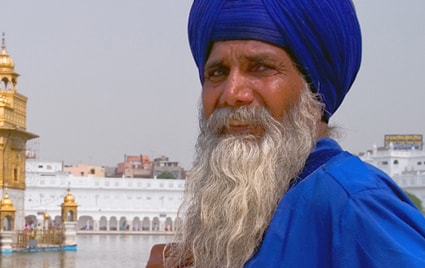
Rastafari Movement
In conformity with injunctions given in the Bible—such as Levictus 21:5—Male Rastafarians wear beards. Levictus 21:5, which can be read as: ''They shall not make any baldness on their heads, nor shave off the edges of their beards, nor make any cuts in their flesh.'' In the Rastafari Movement, the beard is a symbol of the covenant between Jehovah or Jah (God) and his people.
The Philosopher's Beard
Beards were seen as the defining characteristic of the philosopher in Greco-Roman antiquity—anyone with a beard was assumed to be a philosopher and philosophers had to wear beards. While the following belief may be tempting; Socrates and Plato, who sported beards, had philosopher's beard—such belief is false. Indeed, in Athens during the fifth and fourth-century BCE, shaving wasn't widespread—and so therefore, they weren't distinguished from the general population for having such beards. In fact, the rising popularity of shaving did not happen in the region until the end of the fourth century BCE—mainly because of the example given by Alexander the Great. But, the popularity of shaving in Rome didn't rose until the end of the third century BCE—following the acceptance by Scipio Africanus. But at this point in time, shaving's popularity in Rome grew to the stage at which it was almost compulsory for a respectable Roman citizen.
It is really only in 155 BCE that the idea of the philosopher's beard gained traction when 3 philosophers (Critolaus of Aristotle's Lyceum; the head of the Stoics Diogenes of Babylon; and Carneades, head of the Platonic Academy) arrived in Rome as Greek diplomats. At this time, the contrast between those three intellectuals who sported magnificent beards and their Italian clean-shaven audience—created in the Roman public imagination the connection between beards and philosophy.
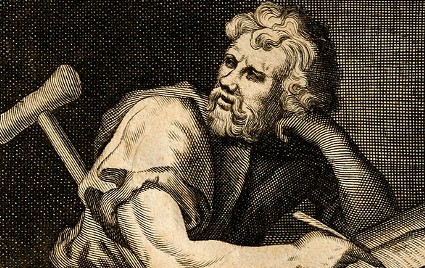
But the real value and importance of the philosopher's beard are best related to Epictetus—whom placed an extreme value over his beard. In fact, as put by historian John Sellars, Epictetus affirmed that the philosopher beard's had something sacred—expressing the idea, in which philosophy is no mere intellectual hobby, but rather a way of life that transforms every aspect of one's behavior—including shaving habits. The true philosopher only act according to reason or nature, rejecting any arbitrary conventions that guide one's behavior. Which meant that someone that would continue to shave in order to look like a respectable Roman citizen, did not embraced philosophy as a way of life, and did not escaped the social customs of the majority.
Epictetus accorded so much importance to his beard—he saw it as an integral part of his identity—he held that he would rather be killed than submitting to a force demanding of him that he remove his beard. At some point, he even puts forward in his Discourses 1.2.29: '''Come now, Epictetus, shave your beard'. If I am a philosopher, I answer, I will not shave it off. 'Then I will have you beheaded'. If it will do you any good, behead me." The act of shaving ''would be to compromise my philosophical ideal of living in accordance with nature and it would be to submit to the unjustified authority of another."
But, in the age of Epictetus, this was no joke nor theoritical—the Emperor Domitian even forced the philosopher Apollonius of Tyana to shave his beard and his hair—as a punishment for his anti-State activities. Epictetus had been forced to flee Rome long before his declaration of ''death before shave''—as Domitian banished all philosophers from Italy.
The style of beards was also used amongst philosophers to distinguish which school they belonged to. The long and dirty beards of Cynics indicated their indifference to all external social customs or goods—the well-trimmed and washed beards of Stoics was in accordance with their vision that it is acceptable to prefer certain external goods, as long as they were never valued above virtue—while the Peripatetics took very great care of their beards, believing that in accord with Aristotle, external goods and social status were necessary for the good life together with virtue. So, in this era, for a Roman philosopher—having a beard with specifics conditions indicated their commitment in accordance with their philosophy.
Modern Prohibition of Beards
Civilian prohibitions
In most jobs that require the wearing of breathing masks—beards are prohibited. Such as for Firefighters, Airline pilots and workers in the oil and gas industry. But, as regulated by the U.S. Court of Appeals for the Eighth Circuit—employers may not require employees to be clean-shaven without good reason—since it has a discriminatory effect against a quite large number of black men, who are prone to razor bumps. To our knowings, there is as of today, only one municipality in the world that decided to ban beards for every male employees—the Japanese municipality of Isesaki,
Sports
In boxing, the wearing of beards by amateur boxers is prohibited by the International Boxing Association—although in England they allow exceptions for Sikh men, on the condition that their beards are covered with a fine net. In wrestling, even though neatly trimmed

In the NHL (National Hockey League), the Playoff Beard is a common tradition nowadays—hockey players grow their beards from the beginning of the playoff season until the playoffs are over for their team. This tradition also spread across most hockey leagues. Some players of the Tyrone Gaelic football team also vowed in 2008, not to shave for the entire season. Guess it made their
In 2011, as Canadian rugby union flanker Adam Kleeberger attracted attention as one of ''the beardos'' of his team—fans would often be seen wearing fake beards and scream ''Fear The Beard''—which became a quite popular expression, which has been coined by the NBA's Oklahoma City Thunder fans and after by the Houston Rockets fans. Brian Wilson, the Los Angeles Dodgers relief pitcher who did not
Armed Forces
We won't go too far into this one, because depending on the country and period—facial hair policies vary a lot. In the Army, they are either prohibited or an integral part of the uniform.

Styles of Beard
There are endless beard's styles, for every taste. Most styles are achieved by shaving or trimming the beard hair using a beard trimmer, cartridge razor, DE safety razor, or a blade like a straight razor. That being said, if only the are above the upper lip is left unshaven, the result is

- Brett: very similar to the curtain beard, but does not connect to the sideburns.
-Chinstrap: long sideburns beard that comes forward until under the chin.
-Chin curtain: very similar to the chinstrap, but covers the entire chin also. It is also often called a Spade, Shenandoah, or a Lincoln.
-Circle beard: or the doorknocker is commonly mistaken for the goatee. But, the circle beard is only a small chin beard that connects to a moustache.
-Closed or Tied beard: kind of full beard tied and stiffen below the chin using a sticky liquid or gel. Mostly worn by modern young Sikh.
-Designer stubble: a short beard style that was popular in the West in the 1980s.
-Friendly mutton chops: sideburns muttonchop style that
-Full: full beard
-Garibaldi: full beard, wide, with
-Verdi:
-Muslim Beard:
-Goatee: hair on the chin only, resembling of a billy goat.
-Hollywoodian: worn on the lower part of the jaw and chin, with
-Hulihee: big and wide sideburns connected at the
-Jawline beard: along the jaw line to the chin.
-Junco: goatee that extends to the corners of the mouth, but without a moustache.
-Meg: name commonly used in Ireland, it is a goatee that connects to the
-Monkey tail: a Lincoln with
-Neckbeard a.k.a.
-Old Dutch: no moustache, large and long beard that flares outward, and wide at the bottom. Not connected to the sideburns.
-Reed: worn on the lower part of the chin and jaw, and tapers towards the ears, but without connecting to sideburns. Also has an integrated moustache.
-Royale: this style, popular in France during the second empire, which is also called the Imperial. It is a narrow pointed beard that extends from the chin.
-Sea captain: medium length beard, with short sides and often paired with a moustache.
-Sideburns: hair that grows from the temples down to the cheeks, and toward the jawline.
-Stashburns a.k.a. Lemmy: chin exposed with sideburns that drop down the jaw but jump upwards across the moustache. Worn by the caricature of Yosemite Sam ou encore Referee Mike Beltran.
-Van Dyke: a
-Soul patch: a small section of beard just below the lower lip, above the chin.
Art and World Record
Beards are often present in art—in all their forms. There is even a music band called ''The Beards''—which all members all famous for their impressive beards. Also, The World Beard and Moustache Championships—which take place every year, evaluate contestants over the creativeness and uniqueness of their beard. The actual world records for the longest beard belong to Hans Langseth—whom had a 17 feet long beard. Meanwhile, the longest beard currently alive is 8 feet. The record for the heaviest weight ever lifter by a beard is detained by Antanas Kontrimas, who lifted 140lbs.
Animals
The first thing to know is that—the term ''beard''—is also used to describe a collection of stiff hair-like feathers—like on the breast of turkeys. The turkey's beard usually
Bearded






